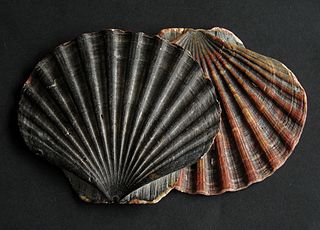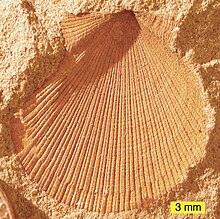Rousseau Hayner Flower (1913–1988) was an extremely prolific 20th century paleontologist, known for his eccentric personality.

Atrypa is a genus of brachiopod with round to short egg-shaped shells covered with many fine radial ridges. Growth lines form perpendicular to the costae and are spaced approximately 2 to 3 times further apart than the costae.. The pedunculate valve is slightly convex, but oftentimes levels out or becomes slightly concave toward the anterior margin. The brachial valve is highly convex. Neither valve contains an interarea. Atrypa had a large geographic range and occurred from the late Lower Silurian (Telychian) to the early Upper Devonian (Frasnian). Other sources expand the range from the Late Ordovician to Carboniferous, approximately from 449 to 336 Ma. A proposed new species, A. harrisi, was found in the trilobite-rich Floresta Formation in Boyacá, Colombia.

Manchurochelys is an extinct genus of turtle. It existed during the early Cretaceous of what is now northeast China. It has been found in the Jianshangou Bed of West Liaoning's Yixian Formation. However, it is a rarely found fossil.

Pecten is a genus of large scallops or saltwater clams, marine bivalve molluscs in the family Pectinidae, the scallops. This is the type genus of the family.

Anomia is a genus of saltwater clams, marine bivalve mollusks in the family Anomiidae. They are commonly known as jingle shells because when a handful of them are shaken they make a jingling sound, though some are also known as saddle oysters.

The Logan Formation is the name given to a Lower Carboniferous siltstone, sandstone and conglomeratic unit exposed in east-central Ohio and parts of western West Virginia, USA.

The Devonian Jeffersonville Limestone is a mapped bedrock unit in Indiana and Kentucky. It is highly fossiliferous.

The Fayetteville Shale is a geologic formation of Mississippian age composed of tight shale within the Arkoma Basin of Arkansas and Oklahoma. It is named for the city of Fayetteville, Arkansas, and requires hydraulic fracturing to release the natural gas contained within.

Lytoceras is an ammonite genus that was extant during most of the Jurassic and Cretaceous periods, and is the type genus for the family Lytoceratidae. These cephalopods were fast-moving nektonic carnivores.








